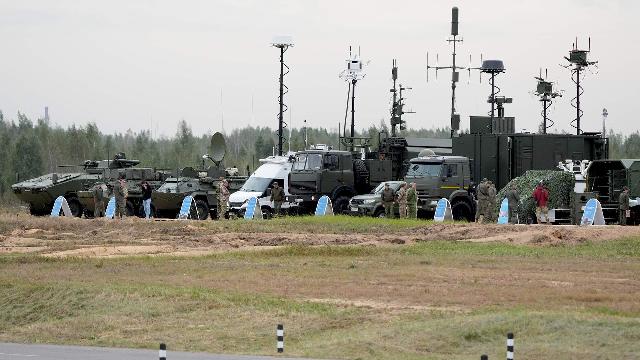Aerial bombs and the latest mobile Saffron laser were used to counter the imaginary enemy
The use of Saffron combat lasers, assault operations of small mobile groups and the massive use of ground and aerial drones — such actions were practiced at the Zapad-2025 exercises. One of the key stages took place at the Borisovsky combined arms range in Belarus. The simulation of military operations was based on the experience gained during the military special operation in Ukraine.
At the starting positions
The height of Dugout-2, despite the formidable name, was quickly "captured" by journalists. They disembarked from the buses and, with television cameras and tripods at the ready, quickly occupied the pre-prepared stands. Not only Russian, but also French, German, and English were heard. The exercises aroused great interest — they were attended by more than 150 media representatives from 15 countries.
— Still, I wonder what new things will be shown to us? — journalists constantly asked this question to each other. They were waiting for a sensation.
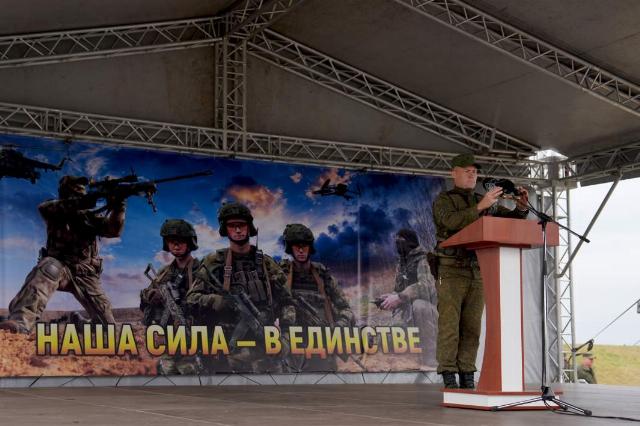
Photo: IZVESTIA/Eduard Kornienko
Image source: iz.ru
International observers from 23 countries joined the training ground next. Among them were representatives of NATO member states.: USA, Turkey and Hungary.
Drones have started
A small dot appeared in the sky — it was a Supercam S-350 reconnaissance drone. He flew silently over the training ground — and it became clear to everyone that everything was about to begin. The positions of the imaginary enemy have been clarified, it's time to act. Nevertheless, the noise of low-flying SU-34 fighter-bombers under the cover of the Su—30SM2 took many by surprise - it's not easy to get used to it.

Photo: IZVESTIA/Eduard Kornienko
Image source: iz.ru
The planes hit the village in turn with FAB-500 bombs, where the enemy's advanced units had entered. Then the Russian-Belarusian forces attacked the bridges with the help of UAVs, isolating the battlefield. Barrel artillery from both sides came into play.
From the Russian-Belarusian side, the upgraded T-72B3M opened fire, replacing each other, such a technique is called a "tank carousel". Then, Su-25 and Yak-130 attack aircraft worked on the detected artillery positions.
Combat laser and other novelties
Meanwhile, the imaginary enemy groped our positions and decided to attack them with the help of UAVs. Then the Saffron combat laser came into play — its use was unexpected news.
"The Saffron mobile complex destroys small—sized UAVs at a distance of up to 1 km," the announcer announced at the training ground. — The defeat time is less than 10 seconds. The crew consists of three people. The complex is currently being tested.
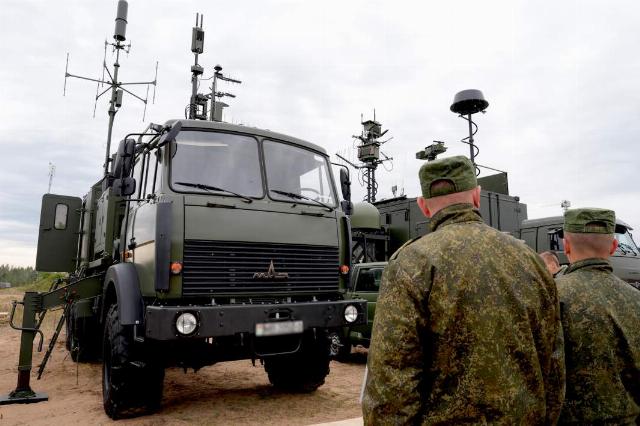
Photo: IZVESTIA/Eduard Kornienko
Image source: iz.ru
Our troops were also covered by fighters with Antidron rifles and machine gunners.
Calculations of anti-tank guided missiles (ATGM) mounted on Ulan all-terrain vehicles began to work on the advancing infantry and armored vehicles. These cars are made on the basis of the domestic Niva car and appeared in the SVO area only a few months ago.
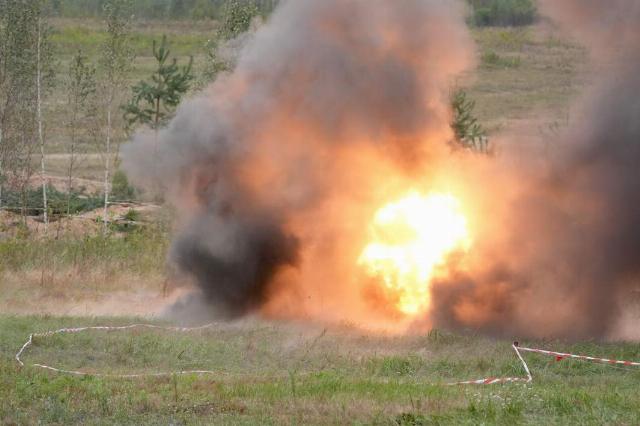
Photo: IZVESTIA/Eduard Kornienko
Image source: iz.ru
They also demonstrated the work of the upgraded BM-21 multiple launch rocket system, an updated Grad that can fire without a crew. Such capabilities of the combat vehicle will have to minimize the losses of our "jet fighters" during the enemy's counter-battery struggle.
Quadro-M drones began to work on the enemy, which can carry up to 7 kg of payload, in particular, several special bombs.
See you victorious
The simulated enemy was stopped in a skirmish, and the Allied forces launched an attack. Mi-35 combat helicopters fired unguided rockets at enemy positions. From the flank, a group of two T-72B3M tanks began destroying firing points with direct fire. Electronic warfare systems have been activated, depriving the aggressors of communication. Mortar batteries set up a smoke screen, and our troops marched forward.
The settlement occupied by the imaginary enemy was attacked by assault groups of twos and threes. They rode ATVs, motorcycles, and on foot. They were supported by ground-based drones with electronic warfare systems, which made it possible to avoid enemy UAV attacks on our attack aircraft.
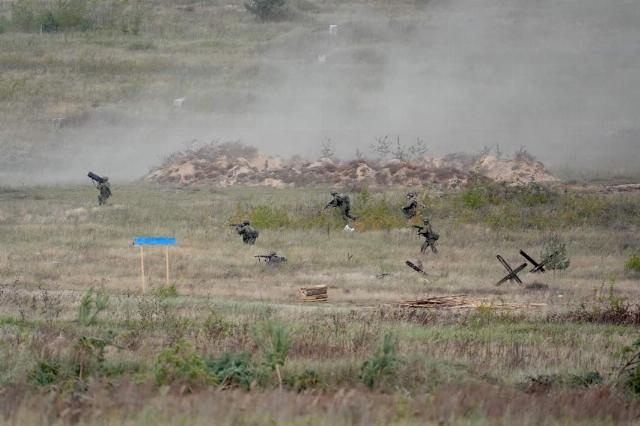
Photo: IZVESTIA/Eduard Kornienko
Image source: iz.ru
Nevertheless, the "wounded" appeared — they were evacuated from the battlefield using robotic platforms. Small wheeled and tracked vehicles, as well as UAVs, delivered ammunition and other necessary supplies to our assault units.
The enemy wavered, but he had to retreat through the terrain, which was previously mined with the help of drones. The settlement was soon cleared, and the Belarusian and Russian flags rose triumphantly over it.

Photo: IZVESTIA/Eduard Kornienko
Image source: iz.ru
Belarusian Defense Minister Lieutenant General Viktor Khrenin noted that the Zapad-2025 exercises are currently in their final stages.
"Everything is new, especially the forms and methods of tactical actions of the troops," he said. — In addition to conducting our own analysis, we also have a good opportunity to gain experience from our Russian colleagues, which they actively share. If we take the operational and strategic levels, I will say this: we managed to plan the issues of using more powerful or powerful weapons in the system of conducting this exercise. For the first time, we were also able to systematize and work out the issues of using unmanned aerial vehicles and countering them.
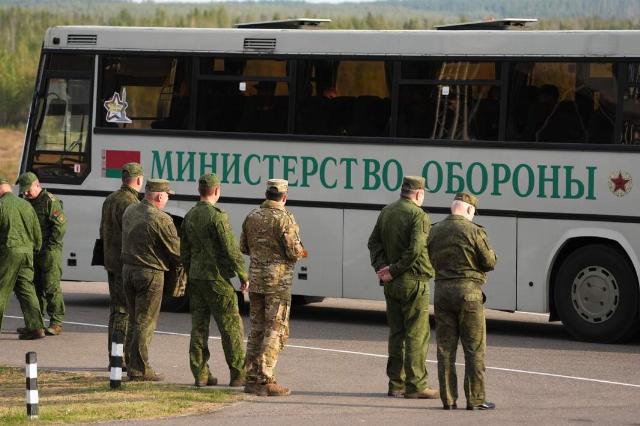
Photo: IZVESTIA/Eduard Kornienko
Image source: iz.ru
Earlier, the head of the Belarusian military department stated that the Zapad-2025 exercises would work out planning for the use of nuclear weapons and the Oreshnik complex.
"This is an important element of strategic deterrence for us,— he said.
After testing the combat episode, several new developments of the Belarusian military-industrial complex were shown at the training ground — electronic warfare systems for combating drones, UAVs and ammunition for them, radar stations for short-range reconnaissance.
The Zapad-2025 joint strategic exercises of Russia and Belarus are taking place from September 12 to 16.
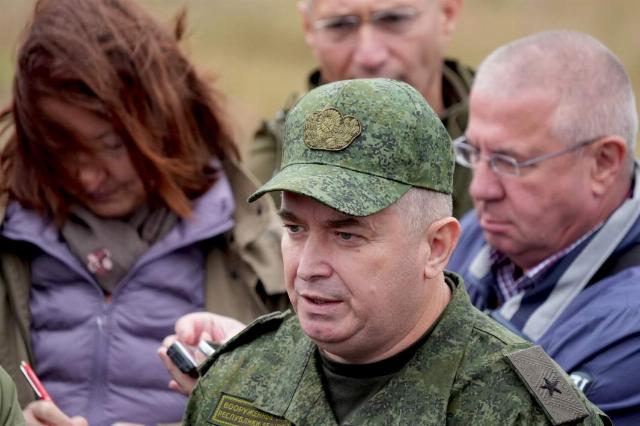
Major General Valery Revenko, Assistant to the Minister of Defense of Belarus for International Military Cooperation, during the Zapad-2025 exercises
Image source: Photo: IZVESTIA/Eduard Kornienko
Major General Valery Revenko, Assistant to the Minister of Defense of Belarus for International military Cooperation, called the Zapad-2025 exercises "unprecedentedly open."
"We do not pose a threat to anyone, we are in favor of building a constructive and pragmatic dialogue," he said.
Nevertheless, the West reacted nervously to what was happening. On the eve of the start, Poland announced the closure of the border with Belarus. The restrictions came into force on the night of September 11-12 and affected not only automobile but also railway crossings. Latvia, Estonia and Lithuania have announced partial closures of airspace along their borders with Russia.
Bogdan Stepovoy
